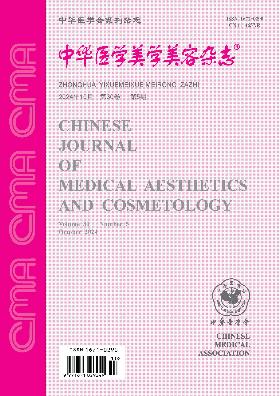Application of internal fixation technique with absorbable material for rhinoplasty to correct secondary nose deformity of unilateral cleft lip with or without cleft palate
引用次数: 0
Abstract
Objective It is crucial to restore and fix the position of nasal septum which elaborates supportive function in rhinoplasty for secondary nose deformity of cleft lip and palate patients. The aim of this study was to explore the fixation technique with absorbable material in rhinoplasty for correction cleft lip nose deformity. Methods Nineteen cases with unilateral cleft lip /with or without palate cleft were included in this study. Absorbable screw was used to fix the implanted and re-positioned grafted cartilage septum which was shaped into strip with anterior nasal spine. Results Full success was achieved for all of 19 cases with internal fixation technique to re-position nasal septum to correct nasal deformity. There was no complications occurred. Conclusions Internal fixation technique with absorbable material could be used to correct secondary nasal deformity in cleft lip and palate patients and fixed re-positioned grafted cartilage septum can apply a strong support to ala nasi cartilage in cleft site. Key words: Cleft lip; Internal fixation; Nose; Deformity; Absorbable screw可吸收材料内固定技术在单侧唇裂伴或不伴腭裂鼻整形术中的应用
目的探讨鼻中隔在唇腭裂继发性鼻畸形鼻成形术中的支撑作用,对鼻中隔的修复和固定至关重要。本研究旨在探讨可吸收材料在鼻整形术中的固定技术,以矫正唇裂鼻畸形。方法对19例单侧唇腭裂患者进行临床分析。采用可吸收螺钉固定已植入并重新定位的移植软骨间隔,该间隔与前鼻棘呈条状。结果采用鼻中隔复位内固定技术矫正鼻畸形19例,均获得圆满成功。没有出现并发症。结论可吸收材料内固定技术可用于唇腭裂患者继发性鼻畸形的矫正,固定复位移植软骨隔膜可对腭裂部位的鼻翼软骨提供强有力的支撑。关键词:唇裂;内固定;鼻子;变形;可吸收螺钉
本文章由计算机程序翻译,如有差异,请以英文原文为准。
求助全文
约1分钟内获得全文
求助全文
来源期刊
自引率
0.00%
发文量
4641
期刊介绍:
"Chinese Journal of Medical Aesthetics and Cosmetology" is a high-end academic journal focusing on the basic theoretical research and clinical application of medical aesthetics and cosmetology. In March 2002, it was included in the statistical source journals of Chinese scientific and technological papers of the Ministry of Science and Technology, and has been included in the full-text retrieval system of "China Journal Network", "Chinese Academic Journals (CD-ROM Edition)" and "China Academic Journals Comprehensive Evaluation Database". Publishes research and applications in cosmetic surgery, cosmetic dermatology, cosmetic dentistry, cosmetic internal medicine, physical cosmetology, drug cosmetology, traditional Chinese medicine cosmetology and beauty care. Columns include: clinical treatises, experimental research, medical aesthetics, experience summaries, case reports, technological innovations, reviews, lectures, etc.

 求助内容:
求助内容: 应助结果提醒方式:
应助结果提醒方式:


